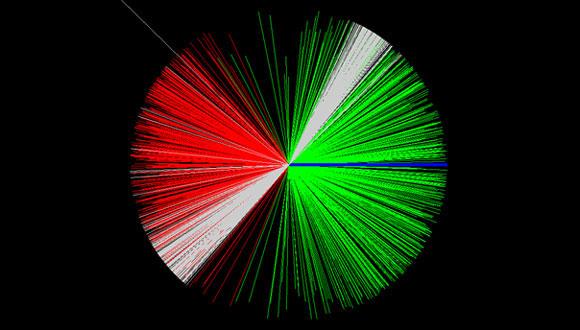Joint Seminar in Nuclear Physics
M. Bashkanov, Physics Institut, Eberhard–Karls–Universitat Tubingen
A. Leviatan, The Hebrew University
PROGRAM (November 24, 2014)
14:30 - 14:45 Refreshments
14:45 - 15:45 "A new state of matter: Dibaryons", M. Bashkanov, Physics Institut, Eberhard–Karls–Universitat Tubingen
5:45 - 16:15 Coffee break
16:15 - 17:15 "Order, chaos and persisting symmetries in a first-order quantum phase transition", A. Leviatan, The Hebrew University
Abstract (1st talk) - "A new state of matter: Dibaryons"
M. Bashkanov, Physics Institut, Eberhard–Karls–Universitat Tubingen
Despite their long painful history dibaryon searches have recently received new interest, in particular by the recognition that there are more complex quark configurations than just the familiar \bar{q}q and qqq systems. The "hidden color" aspect makes dibaryons a particularly interesting object in QCD.
A resonance like structure recently observed in double-pionic fusion to deuteron, at M=2.38 GeV with \Gamma= 70 MeV and (J_p)=0(3+) meanwhile proved to be the so called “inevitable dibaryon” d*(2380). To investigate its structure we have measured its decay branches into the d\pi^0\pi^0, d\pi^+\pi^-, pp\pi^-\pi^0, pn\pi^0\pi^0 and pn channels.
d*(2380) dibaryon is robust enough to survive even in a nuclear surrounding, which may have interesting consequences for nuclear matter under extreme conditions. It has been shown that d* resonance can explain some dilepton yield in heavy-ion collisions (”DLS Puzzle”).
Various theoretical calculations on d* internal structure can be verified by future experiments in MAINZ and JLab. d*(2380) is unique multiquark system where the interplay between six-quark and molecular baryon-baryon components can be actually measured. Further investigations on d* dibaryon SU(3) multiplet companions as well as the mirror partners are expected to be done in near future by COSY, JLab, J-PARC and PANDA facilities.
Abstract (2nd talk), Order, Chaos and persisting symmetries in a first-order quantum phase transition A. Leviatan The Hebrew University
Quantum phase transitions (QPTs) are structural changes in the properties of a physical system induced by a variation of parameters in the quantum Hamiltonian. In the present talk, we examine the order and chaos and persisting symmetries, accompanying a first-order QPT in nuclei. The Hamiltonian employed describes a QPT between spherical and deformed shapes, associated with U(5) and SU(3) dynamical symmetries, respectively. A classical analysis reveals a rich but simply-divided phase space structure with a Henon-Heiles type of chaotic dynamics ascribed to the spherical minimum, coexisting with a robustly regular dynamics ascribed to the deformed minimum in the Landau potential. A quantum analysis discloses regular U(5)-like multiplets in the spherical region and regular SU(3)-like rotational bands in the deformed region, which retain their identity amidst a complicated environment of other states. A symmetry analysis shows that these regular subsets of states, are associated with partial U(5) dynamical symmetry (PDS) and SU(3) quasi-dynamical symmetry (QDS), respectively.
For more details, please consult the joint seminar home page.


